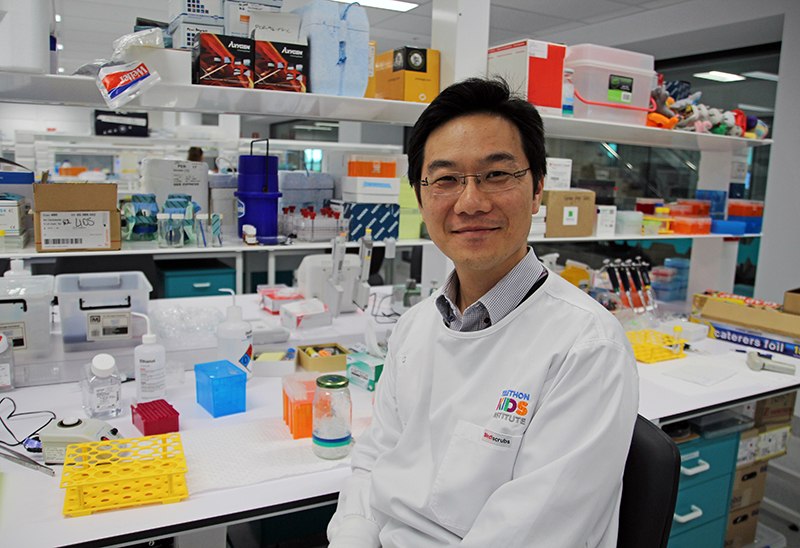Search
Research
Genome-wide association meta-analysis of single-nucleotide polymorphisms and symptomatic venous thromboembolism during therapy for ALL and lymphoma in caucasian childrenThe largest GWAS meta-analysis conducted to date associating SNPs to venous thromboembolism in children and adolescents treated on childhood ALL protocols
Research
Novel BRD4-NUT fusion isoforms increase the pathogenic complexity in NUT midline carcinomaThis study contributes to our understanding of the genetic diversity of NMC, an important step towards finding therapeutic targets for a disease that is...
Research
Novel therapeutics approaches for infants with high-risk infant acute lymphoblastic leukaemiaRishi S. Laurence Sébastien Kotecha Cheung Malinge MB ChB (Hons) MRCPCH FRACP PhD BPharm (Hons) MBA PhD PhD Co-Head, Leukaemia Translational Research

News & Events
Working to end childhood cancer: A father’s storyDr Laurence Cheung is doing everything he can to end the threat of childhood leukemia. His research has the potential to change countless lives, but he also has another important job – being a dad to three beautiful children.
Research
Interactions between acute lymphoblastic leukemia and bone marrow stromal cells influence response to therapyTo identify links between drug resistance and gene deregulation we used oligonucleotide microarray technology.
Research
Influence of wild-type MLL on glucocorticoid sensitivity and response to DNA-damage in pediatric acute lymphoblastic leukemiaRearrangement of the mixed-lineage leukemia gene (MLL) is found in 80% of infant acute lymphoblastic leukemia (ALL) and is associated with poor prognosis and re
Research
Gene-based outcome prediction in multiple cohorts of pediatric T-cell acute lymphoblastic leukemia: a Children's Oncology Group studyContinuous complete clinical remission in T-cell acute lymphoblastic leukemia (T-ALL) is now approaching 80% due to the implementation of aggressive...
Research
Glucocorticoid resistance in T-lineage acute lymphoblastic leukaemia is associated with a proliferative metabolismWe examined the baseline profile of a panel of T-ALL cell lines to determine factors that contribute to GC resistance without prior drug selection.
Research
Aging of preleukemic thymocytes drives CpG island hypermethylation in T-cell acute lymphoblastic leukemiaCancer cells display DNA hypermethylation at specific CpG islands in comparison to their normal healthy counterparts, but the mechanism that drives this so-called CpG island methylator phenotype (CIMP) remains poorly understood. Here, we show that CpG island methylation in human T-cell acute lymphoblastic leukemia (T-ALL) mainly occurs at promoters of Polycomb Repressor Complex 2 (PRC2) target genes that are not expressed in normal or malignant T-cells and which display a reciprocal association with H3K27me3 binding.
Research
Regular exercise improves the well-being of parents of children with cancerMental health benefits of a pedometer-based exercise intervention for parents of children with cancer were identified.
